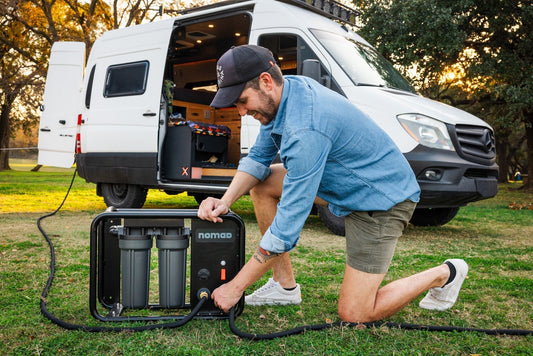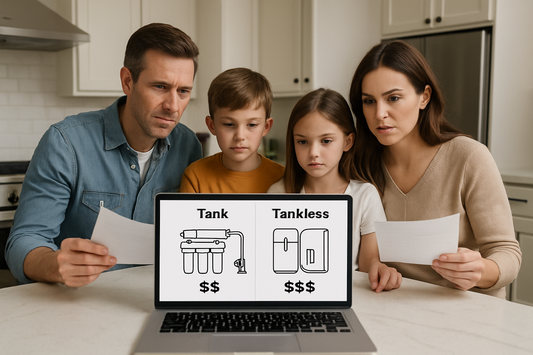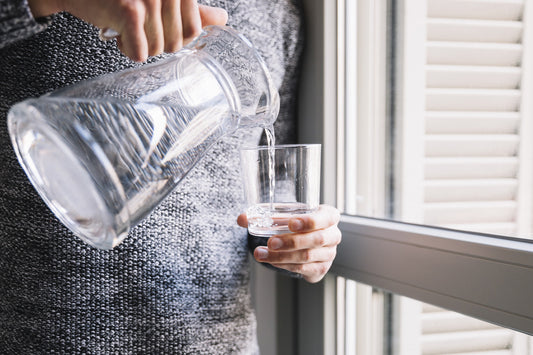Stainless steel water filters deliver clean, safe drinking water without the chemical leaching concerns of plastic alternatives. Whether you're setting up your first gravity-fed system or troubleshooting an existing unit, this comprehensive guide walks you through every step of installation, maintenance, and problem-solving.
Why Choose Stainless Steel Water Filters?
Stainless steel water filters stand out for three key reasons: durability, purity, and environmental responsibility. Unlike plastic systems, stainless steel won't crack under temperature changes or leach harmful chemicals into your water. The material's natural resistance to corrosion ensures your filter maintains its effectiveness for years, making it a smart long-term investment for clean water.
The sleek appearance also complements modern kitchens while providing the same filtration power as bulkier plastic units. For families concerned about water quality, stainless steel offers peace of mind through reliable contaminant removal without adding unwanted substances.

Image by chokpix
Pre-Installation Checklist
Before starting your stainless steel water filter installation, gather these essential items:
Required Components:
- Stainless steel housing unit
- Filtration cartridges (specific to your model)
- Dispensing tap
- Rubber gaskets and sealing rings
- Mineral pad (if included)
- Assembly hardware (nuts, washers, screws)
Tools Needed:
- Adjustable wrench or spanner
- Clean cloth for wiping components
- Mild dish soap for cleaning
Preparation Steps:
- Clean your workspace - Ensure countertop area is sanitized
- Wash all components - Rinse parts with mild soap and water
- Check inventory - Verify all pieces match your instruction manual
- Plan your setup location - Choose stable, level surface near water source
Step-by-Step Installation Guide
Setting Up the Base Unit
Start with the bottom chamber of your stainless steel water filter. Place the rubber base ring on your chosen surface to prevent sliding and protect your countertop. Position the lower housing unit on top, ensuring it sits level and stable.
Installing the Dispensing Tap:
- Insert the tap through the designated hole at the bottom of the housing
- Secure with the provided nut, tightening with your wrench
- Test for stability - the tap should be snug but not over-tightened
- Ensure smooth operation by testing the handle movement
Preparing Filter Cartridges
Proper cartridge preparation is crucial for optimal water filtration performance. Remove cartridges from packaging and inspect for any visible damage or defects.
Cartridge Priming Process:
- Rinse each cartridge under cold tap water for 30 seconds
- Remove any loose carbon particles or manufacturing residue
- Soak cartridges in clean water for 5-10 minutes (check manufacturer specifications)
- This activation step ensures immediate filtration effectiveness
Final Assembly Steps
Install primed cartridges into the upper chamber, ensuring proper alignment with threaded connections. If your system includes multiple cartridge types, follow the specified order - typically carbon block filters first, followed by specialized removal cartridges.
Place the mineral pad (if included) in the bottom chamber before positioning the upper unit. The mineral pad enhances water taste by adding beneficial minerals back into the filtered water.
Secure the top and bottom chambers, ensuring all connections are tight but not over-torqued. Fill the upper chamber with water for your first filtration cycle.
Common Installation Problems and Solutions
Problem: Water flow is extremely slow or stopped
- Cause: Cartridges not properly primed or air bubbles trapped
- Solution: Remove cartridges, re-prime thoroughly, and ensure proper seating
Problem: Metallic taste in filtered water
- Cause: New stainless steel housing needs seasoning
- Solution: Run 2-3 full cycles of water through system before consumption
Problem: Leaking around tap connection
- Cause: Insufficient tightening or missing gasket
- Solution: Check gasket placement and tighten connection gradually
Problem: Upper chamber doesn't fit properly
- Cause: Cartridges incorrectly installed or housing misaligned
- Solution: Remove upper chamber, check cartridge placement, realign components

Image by freepik
Maintenance Timeline and Schedule
Weekly Tasks (5 minutes)
- Wipe exterior with damp cloth
- Check water flow rate
- Refill upper chamber as needed
Monthly Tasks (15 minutes)
- Clean tap and exterior thoroughly
- Inspect rubber seals for wear
- Check for any loose connections
Every 3-6 Months (30 minutes)
- Replace filter cartridges based on usage
- Deep clean all removable components
- Test water taste and quality
Annual Tasks (45 minutes)
- Complete system disassembly and cleaning
- Replace all rubber gaskets and seals
- Inspect housing for any damage or wear
Signs Your Cartridges Need Replacement:
- Decreased water flow rate
- Return of chlorine taste or odor
- Visible sediment in filtered water
- Reached manufacturer's recommended lifespan
Maximizing Filter Performance
To get the most from your stainless steel water filter, follow these optimization tips:
Water Quality Factors:
- Pre-filter heavily sediment-laden water to extend cartridge life
- Monitor local water quality reports for seasonal changes
- Adjust replacement schedules based on daily usage volume
Storage and Care:
- Keep spare cartridges in cool, dry storage
- Never let the system sit empty for extended periods
- Use filtered water within 3-4 days for best taste
Performance Monitoring:
- Track filtration speed - should maintain consistent flow
- Note any changes in water taste or appearance
- Keep maintenance log for warranty purposes

Health and Environmental Benefits
Stainless steel water filters provide immediate health benefits by removing chlorine, sediment, and many harmful contaminants while preserving beneficial minerals. Unlike bottled water, these systems eliminate plastic waste and reduce long-term costs.
Environmental Impact:
- Eliminates need for plastic water bottles
- Stainless steel is 100% recyclable
- Reduces carbon footprint from bottled water transportation
- Long-term durability means fewer replacements
Health Advantages:
- No chemical leaching from filter materials
- Maintains natural mineral content
- Removes chlorine taste and odor
- Reduces exposure to water treatment chemicals
Ready to upgrade your entire water filtration system? Check out our whole house stainless steel water filter for the perfect solution for your home!
Frequently Asked Questions
How often should I replace stainless steel water filter cartridges? Replace cartridges every 6-12 months depending on water quality and usage. High-sediment water or heavy daily use may require more frequent changes. Monitor flow rate and taste as indicators.
Can stainless steel water filters remove fluoride from drinking water? Standard carbon cartridges don't remove fluoride effectively. Look for systems specifically designed with fluoride-removal media or specialized cartridges for fluoride reduction.
What's the difference between stainless steel and plastic water filters? Stainless steel offers superior durability, no chemical leaching, better temperature resistance, and longer lifespan. While plastic filters cost less initially, stainless steel provides better long-term value.
Why does my new stainless steel filter make water taste metallic? New stainless steel housings may impart a slight metallic taste initially. Run 2-3 full filtration cycles before drinking, and the taste will disappear as the system seasons.





